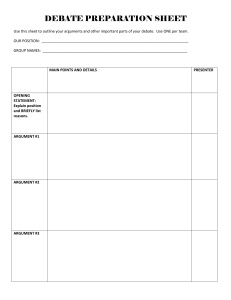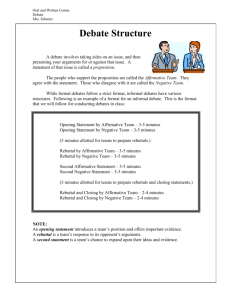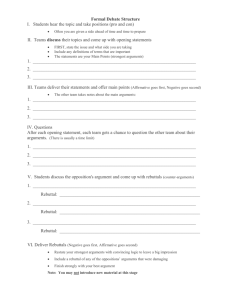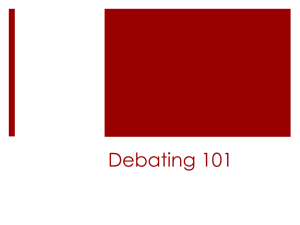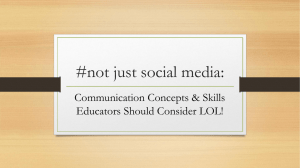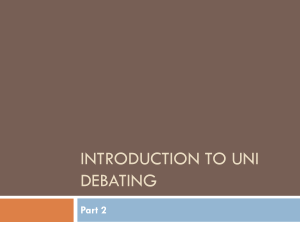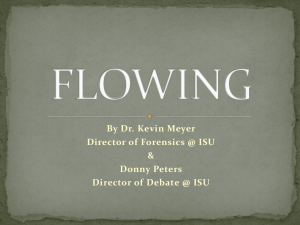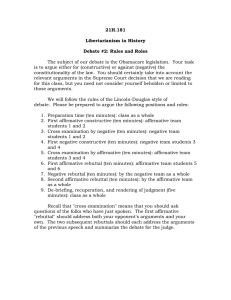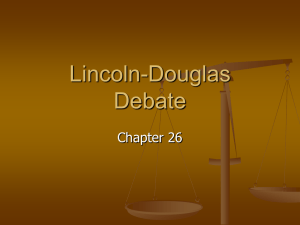Debate Basics & Public Forum Format: Student Resource
advertisement
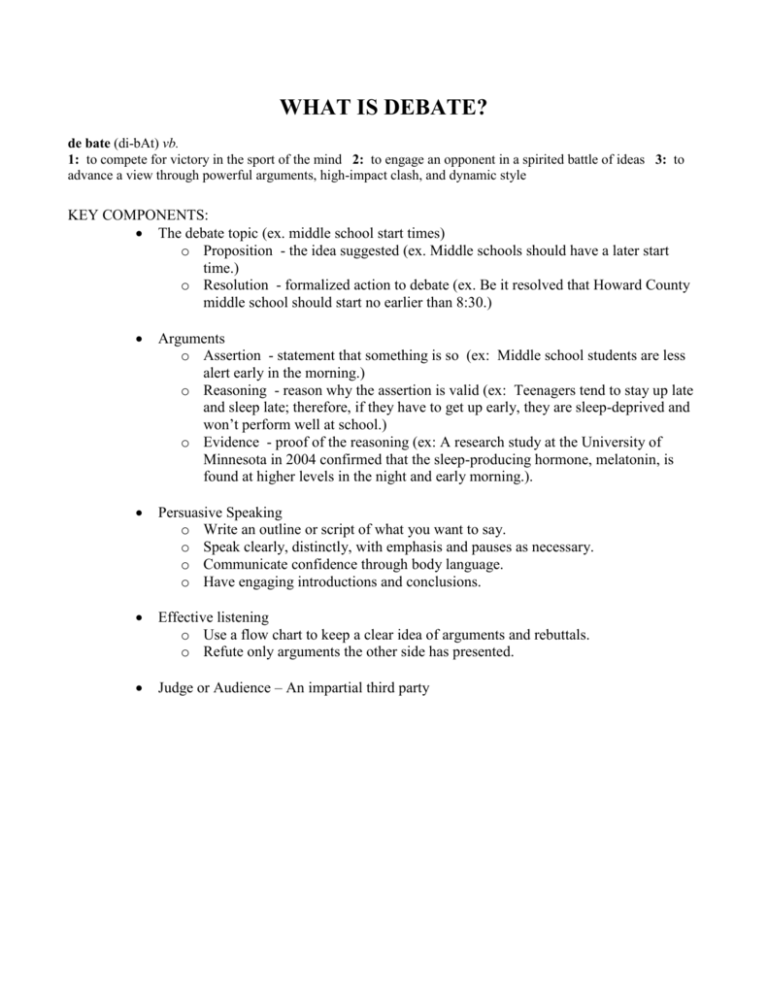
WHAT IS DEBATE? de bate (di-bAt) vb. 1: to compete for victory in the sport of the mind 2: to engage an opponent in a spirited battle of ideas 3: to advance a view through powerful arguments, high-impact clash, and dynamic style KEY COMPONENTS: The debate topic (ex. middle school start times) o Proposition - the idea suggested (ex. Middle schools should have a later start time.) o Resolution - formalized action to debate (ex. Be it resolved that Howard County middle school should start no earlier than 8:30.) Arguments o Assertion - statement that something is so (ex: Middle school students are less alert early in the morning.) o Reasoning - reason why the assertion is valid (ex: Teenagers tend to stay up late and sleep late; therefore, if they have to get up early, they are sleep-deprived and won’t perform well at school.) o Evidence - proof of the reasoning (ex: A research study at the University of Minnesota in 2004 confirmed that the sleep-producing hormone, melatonin, is found at higher levels in the night and early morning.). Persuasive Speaking o Write an outline or script of what you want to say. o Speak clearly, distinctly, with emphasis and pauses as necessary. o Communicate confidence through body language. o Have engaging introductions and conclusions. Effective listening o Use a flow chart to keep a clear idea of arguments and rebuttals. o Refute only arguments the other side has presented. Judge or Audience – An impartial third party Student Resource Sheet 1.2 PUBLIC FORUM DEBATE FORMAT (In the Following Order) Opening - Affirmative = 4 Minutes Opening - Negative = 4 Minutes Crossfire = 2 Minutes (5-minute prep time) Rebuttal - Affirmative = 4 Minutes Rebuttal - Negative = 4 Minutes Crossfire = 2 Minutes (3-minute prep time) Summary/Closing - Affirmative = 2 Minutes Summary/Closing - Negative = 2 Minutes
